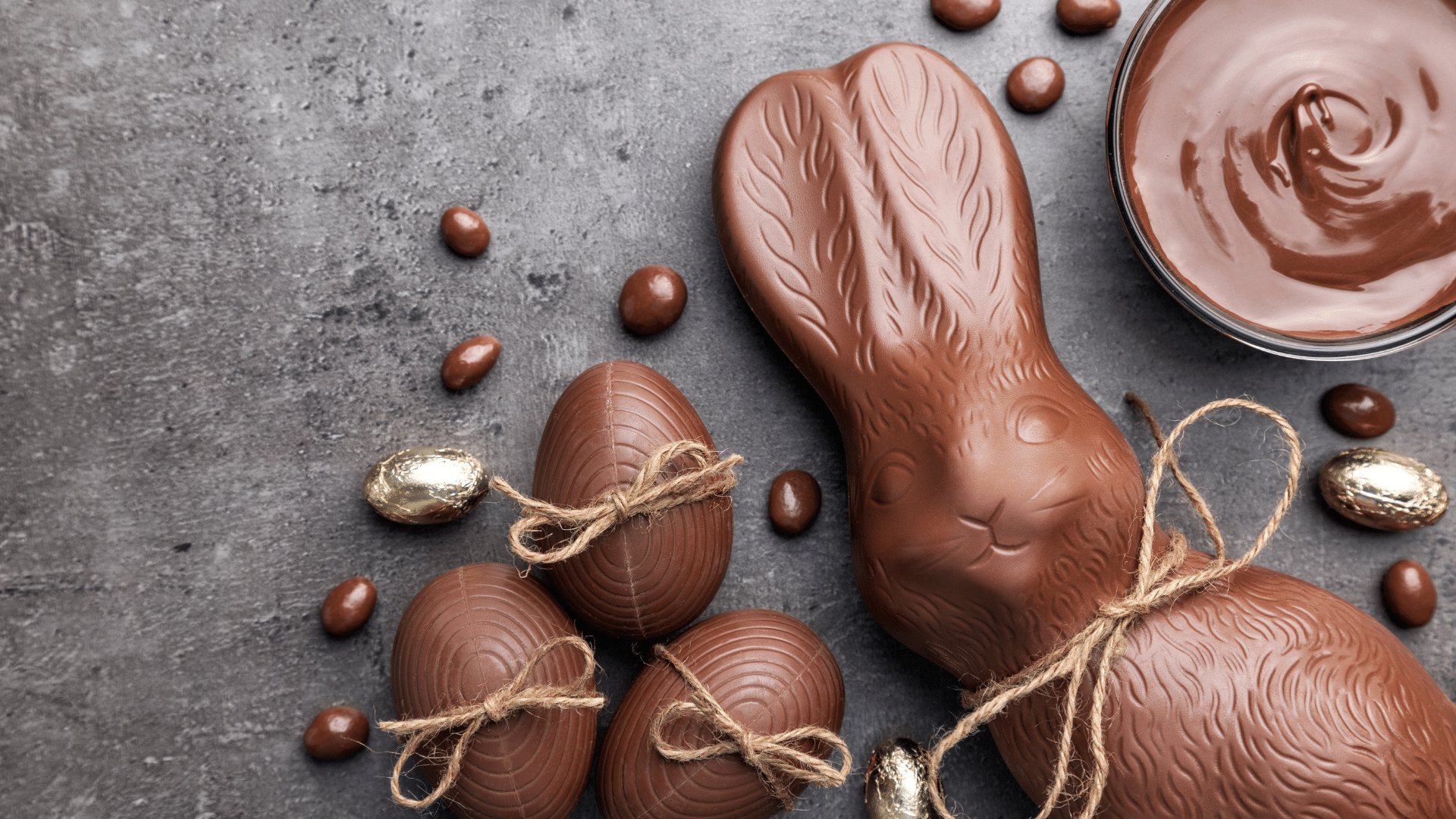Easter is almost here and that means all things chocolate! (In addition, of course, to the traditional and religious importance of the holiday.) If you can believe it, the week of Easter sees the highest chocolate sales worldwide. Even more than Christmas or Valentine’s Day or Halloween.
What makes chocolate so appealing during this wonderful holiday?
Chocolate abounds during Easter – it is everywhere! And some people are certain that chocolate Easter eggs actually taste different (i.e. better) than chocolate at other times of the year. Is there any truth to this wild claim?
Whether it’s a chocolate Easter bunny, chocolate Easter eggs or quality custom chocolate, what is it that makes chocolate taste so absolutely delicious during this time of year?
We did some research and want to share what we found.
Does Chocolate Taste Better at Easter?
It turns out that it’s not all in your mind — there is some truth (and science) behind that deep desire to consume so many chocolate Easter bunnies and chocolate Easter eggs year after year.
Bernard Lahousse is a food scientist who explains why chocolate Easter eggs taste so much better than other chocolate. According to our scientist, it comes down to the smell of chocolate. When chocolate is offered in the form of a sweet little egg, that smell is enhanced.
“The smaller the chocolate layer is, the easier the chocolate will melt,” Mr. Lahousse says. “So that is the advantage of Easter eggs; they melt easily and the aromas of the chocolate come into your nose quite fast.”
The way that chocolate interacts with our smell receptors, which then interact with our brains and sense of hunger and cravings, is complicated and fascinating. Mr. Lahousse continues: “Chocolate contains a lot of different aroma molecules. It has roasted molecules and fruity molecules. These molecules contain a lot of complexity which makes it possible for chocolate to be paired with a lot of ingredients.”
Of course, it’s not just the smell of chocolate that we crave and covet — the taste has something to do with it, too. “There are a lot of taste components contained within chocolate,” Mr. Lahousse explains. “We have sweetness, bitterness, and sourness. Plus, we can’t disregard the fat component. This melts at body temperature and provides a nice sensation and fresh feel in the mouth.”
Easter Chocolate as a Mood Booster
Furthermore, eating chocolate can actually boost your mood, which can improve your quality of life. We are not saying that chocolate should replace mental health support, but if you are feeling down, a moderate square or two of high-quality chocolate might stimulate happy memories.
Moderate consumption of dark chocolate has been linked to positive mental and physical health outcomes. That’s because dark chocolate contains flavonoids, which act as an antioxidant. These agents protect the body against toxins that enter our systems either through the environment (like pollution) or through the foods we eat.
The flavonoids/antioxidants keep your heart healthy by protecting it from things that can lead to heart disease. Flavonoids accomplish this in several ways. They…
- relax and lower blood pressure
- help lower and control cholesterol
- balance hormones in the body, especially important for women who experience a monthly cycle of hormone fluctuations
- serve as an antidepressant
That’s a little off topic, but we just want to make the correlation between eating chocolate and feeling good, no matter what time of year it is.
Chocolate Easter Eggs and Easter
Have you ever wondered why it is that we eat Easter eggs during this once very religious holiday? The very fact that we associate chocolate eggs with Easter is quite a tale. As we all know, Easter eggs are given to children by a hopping rabbit who lays them in colored nests or sometimes hides them around the yard.
That American storyline may have originated with German immigrants who called this creature “Osterhase” or “Oschter Haws.” By German tradition, children were encouraged to make small nests in which this special animal could lay its colored eggs.
The egg also has a special meaning for Christians — the shell symbolizes Jesus’ tomb, while the newborn bird represents Jesus emerging from it.
Whatever the connection you or your family and heritage have to Easter and its many traditions, we hope you get to partake in some fun this Easter season. Because at the end of the day, chocolate is the closest thing we have to the perfect food, and whether or not it tastes better during Easter might be irrelevant. What’s really important is that we get to enjoy some high-quality chocolate every now and then; whatever form it comes in!

How to Make Your Own Chocolate Easter Eggs (in brief)
For a more detailed explanation, watch videos online to get the hang of the process.
- Break your chocolate into rough chunks, then finely chop it into small pieces – the smaller the better.
- Half-fill a small pan with water and, over low heat, bring to a gentle simmer. Rest a heatproof bowl on top (or use a standard double boiler), add the chopped chocolate to the bowl, then allow to melt, stirring occasionally.
- Once your chocolate is melted, it needs to be tempered. Remove the bowl from the heat and leave to cool to 95ºF. Use a cooking thermometer for accuracy.
- Spoon some chocolate into an egg-shaped mold and rotate it so the liquids coat it evenly. You can make it as thick as you like (keeping in mind what we just learned about thin layers of chocolate). You can also add more layers, building up as the previous one cools.
- Once you’ve built the final layer, put the mold aside to cool and harden before removing the eggs and decorating.
